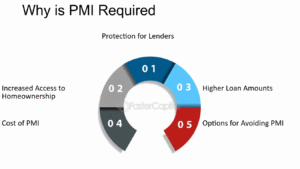
Negotiating a car price can be a daunting task, but with the right approach, it becomes manageable and effective. Many buyers miss out on savings because they don’t prepare or know how to approach the conversation confidently.
The key to successful negotiation is understanding the car’s value, setting a clear budget, and knowing when and how to make offers. These tips help buyers avoid common pitfalls and maximize their chances of getting a fair deal.
By focusing on practical tactics rather than pressure or emotion, anyone can improve their bargaining position and avoid overpaying. This article outlines five straightforward tips that guide readers through the negotiation process with confidence.
Understanding the Car Buying Process
Negotiating a fair car price requires knowing the market value of the vehicle, establishing an affordable budget, and timing the purchase strategically. Each step helps buyers avoid overspending and secure better financing and insurance terms.
Researching Vehicle Values
It is crucial to begin by determining the current market value of the car, considering factors like model, year, mileage, and condition. Reliable sources include Kelley Blue Book, Edmunds, and NADA Guides, which offer pricing ranges for private sales and dealer prices.
Buyers should also check local listings to see how similar cars are priced nearby. This research highlights if a dealer’s offer is reasonable or inflated.
Understanding depreciation trends aids negotiation, as some cars lose value faster. Knowing certified pre-owned (CPO) benefits or warranty inclusions can justify a higher price but should be weighed against cost.
Setting a Realistic Budget
A clear budget aligns with financial capabilities and includes the vehicle price, taxes, fees, insurance, and expected loan interest. The 20/4/10 rule is a helpful guideline: a 20% down payment, financing for no more than 4 years, and total transportation costs under 10% of gross monthly income.
In 2025, the average new car payment is about $650 per month, and interest rates vary with credit scores—excellent scores get rates near 4%, while lower scores may exceed 10%.
Insurance costs also impact budgeting; the average annual premium in 2025 is around $1,700. Buyers should request insurance quotes for the specific vehicle to avoid surprises.
Identifying the Best Time to Buy
Timing can significantly influence price negotiations. End-of-month, end-of-quarter, and year-end sales targets often create dealer incentives to reduce prices. Purchasing during these periods can save hundreds or thousands.
Seasonal factors matter: convertibles sell for less in winter, while SUVs may cost less in summer. New model releases can also lower prices of outgoing models.
Waiting for special promotions, manufacturer rebates, or low-interest financing deals improves affordability. Shoppers should monitor dealer websites and subscribe to alerts to stay updated on these offers.
Tip 1: Do Thorough Market Research
Understanding price variations, vehicle condition, and options like certified pre-owned programs helps buyers negotiate effectively. Research maximizes savings and ensures informed decisions about loan costs and insurance.
Comparing Prices Across Dealerships
Prices for the same car model can vary significantly by dealership. Checking multiple dealer listings gives a realistic price range.
Buyers should note invoice price vs. MSRP. The invoice price reflects the dealer’s cost and serves as a baseline for negotiation.
Online tools and apps provide recent transaction prices, highlighting what others paid nearby. This data helps avoid overpaying.
Including popular destinations in research may uncover regional price differences. Dealers in metro areas often offer sales incentives absent in rural dealerships.
Checking Vehicle History Reports
A comprehensive vehicle history report reveals accidents, title status, and maintenance records. These elements directly affect a car’s resale value and negotiation leverage.
Buyers often access reports via services like Carfax or AutoCheck. Confirming no major repairs, flood damage, or odometer tampering decreases the risk of hidden costs.
Knowledge of repair history might justify a price reduction. Even average costs like repainting (around $1,000 to $5,000 depending on quality) should factor into valuation.
Verifying warranty status and service records from the report can impact discussions, especially with certified pre-owned cars.
Evaluating Certified Pre-Owned vs. New Cars
Certified pre-owned (CPO) vehicles balance lower prices with manufacturer-backed warranties. They usually undergo rigorous inspections, which may reduce potential repair costs.
New cars carry higher upfront costs. Median loan payments in 2025 fall near $650 monthly, while CPO loans often offer lower rates and shorter terms.
Insurance costs also differ. The Top 10 largest US auto insurance companies report premiums on new cars average 15-20% higher than similarly modeled CPO vehicles.
Buyers should weigh warranty benefits and depreciation rates. New cars depreciate by about 20-30% in the first year, making CPO models more cost-effective in many cases.
Tip 2: Leverage Your Financing Options

Understanding different financing routes and how credit status affects loan terms is crucial. Buyers who prepare financing in advance can negotiate with confidence and secure better rates.
Getting Pre-Approval for Auto Loans
Pre-approval for an auto loan shows a dealer that the buyer is serious and financially prepared. It helps establish a clear budget and prevents paying more than necessary. Many banks, credit unions, and online lenders offer pre-approval, allowing shoppers to compare interest rates upfront.
A pre-approved loan often has a fixed interest rate based on the borrower’s creditworthiness. This can range depending on the lender and current average auto loan interest rates by credit score in 2025. Securing pre-approval before negotiating provides leverage since the dealer knows the buyer has other financing options.
Understanding Dealer Financing vs. Bank Financing
Dealer financing is usually convenient but may come with higher interest rates compared to bank or credit union loans. Dealers may offer promotional rates for specific models or credit tiers, but these deals can be limited.
Bank financing or credit unions tend to provide more competitive and transparent rates, especially for borrowers with good credit scores. Comparing the dealer’s offer against pre-approved bank loans helps buyers identify the best terms. A clear comparison table might look like this:
|
Financing Option |
Interest Rate Range (APR) |
Typical Terms |
Key Advantage |
|---|---|---|---|
|
Dealer Financing |
4% – 8% + |
36-72 months |
Convenience and promos |
|
Bank/Credit Union |
3% – 6% |
36-84 months |
Lower rates, clear terms |
Recognizing the Impact of Credit Scores
Credit score heavily influences interest rates and loan eligibility. Generally, a score above 700 secures better rates, while scores below 600 result in higher interest or loan denials. Knowing the current credit score is essential before applying.
Buyers can improve their credit scores moderately over a short time by paying down balances or correcting errors, but raising a credit score by 100 points in 30 days is rare and unlikely. When preparing to buy, understanding what credit score is needed to buy a car helps set realistic expectations.
Well-qualified buyers might also consider the best personal loans with a cosigner in 2025 to improve loan approval odds or get lower interest rates. Combining credit information with solid financing knowledge strengthens negotiation power.
Tip 3: Master the Art of Negotiation

Negotiating a car price requires a clear strategy and awareness of the seller’s position. Key practices include setting an initial offer wisely, managing back-and-forth offers, and recognizing when to end negotiations to avoid overspending.
Starting with a Reasonable Offer
A reasonable opening offer sets the tone. It should be based on thorough research of the car’s market value, not an arbitrary low number. Using trusted pricing guides and recent sales data helps frame an offer that is attractive but leaves room for adjustment.
Starting too low might offend the seller, reducing the chance of a successful deal. An offer roughly 5-10% below the asking price is often seen as fair, especially if backed by facts like repair costs or mileage. This approach increases the odds of a productive negotiation without wasting time.
Handling Counteroffers Effectively
When the seller responds, he or she will likely present a counteroffer that narrows the gap. It is important to evaluate the counteroffer against the desired price and total cost of ownership, including average car payment and loan conditions in 2025.
Respond calmly and avoid immediate concessions. Instead, clarify the seller’s flexibility and highlight your reasons for the original offer. Using clear, data-based points—such as comparable vehicle prices or potential refinancing challenges for buyers with bad credit—can create leverage.
Knowing When to Walk Away
Walking away is a critical skill in negotiation. If the price or terms do not meet a buyer’s budget or financing possibilities, such as achieving affordable auto loan rates, it is better to pause.
Recognizing limits early prevents overspending or poor loan decisions. Sellers may return with better offers once they sense the buyer is serious about leaving. Staying firm without desperation often yields better final prices. When no deal fits financial constraints, pursuing other options or waiting can save money in the long run.
Tip 4: Understand Dealer Tactics

Dealers use specific strategies to influence buyers and increase profit. Being aware of these tactics helps buyers avoid unnecessary costs and make informed decisions.
Common Sales Strategies
Dealers often use anchoring by highlighting an inflated price before offering discounts. This creates a perception of getting a better deal. They also rely on monthly payment focus, shifting the conversation away from the total price to affordable monthly installments.
Another common approach is the “four-square” method, where the dealer mixes the price of the car, trade-in value, down payment, and monthly payment to confuse the buyer. Buyers should demand clear, separate figures for each to maintain control.
Dealers may also time deals near the end of the month or quarter to meet sales targets. Recognizing these patterns helps buyers know when to negotiate harder.
Recognizing Add-Ons and Fees
Add-ons like extended warranties, paint protection, or rust-proofing are frequently pushed during negotiation. They often come at a high markup and are usually optional.
Buyers should watch for fees labeled as “dealer preparation” or “documentation fees.” These can sometimes be negotiated down or waived. Checking the invoice and contract carefully is crucial here.
Insurance is another add-on to consider. Dealers might suggest or include insurance they partner with, but buyers should compare offers against the Average Cost of Car Insurance (2025) from the Top 10 Largest US Auto Insurance Companies to avoid overpaying.
Understanding bonus tax rates in 2025 is important if a buyer receives a negotiating bonus or incentive, as taxes on these can affect overall savings.
Tip 5: Review the Final Agreement Carefully

Before signing, it is essential to scrutinize every part of the agreement. This includes confirming that all negotiated terms are correctly written and checking for any unexpected charges.
Double-Checking Contract Terms
He should read the contract line by line. This ensures the price, financing terms, interest rates, and length of the loan match what was agreed upon. Any mention of foreign transaction fees or additional service charges should be clarified before signing.
If the car title transfer process is included, he must verify that it complies with local laws and that the dealership will handle it promptly. Missing or incorrect details here can cause legal issues or delays in ownership transfer.
Verifying All Costs and Fees
He needs to examine the breakdown of costs thoroughly. The contract should clearly list the base price, taxes, dealer fees, financing charges, and any add-ons. Look for hidden fees like extended warranties or costly dealer-installed accessories.
If refinancing is a concern, especially with bad credit, he should check if the contract allows future refinancing without penalties. Clarification on any foreign transaction fees—applicable if the payment or financing involves an international element—is also crucial to avoid surprises.
Additional Strategies for Saving Money
Maximizing savings during a car purchase often depends not just on the sticker price but on how buyers handle trade-ins and available manufacturer or dealer incentives. These factors can significantly lower the overall cost with proper preparation and research.
Negotiating Your Trade-In Value
Trade-in negotiations can add substantial value if approached with accurate information. Sellers should research their vehicle’s trade-in worth using tools like Kelley Blue Book or Edmunds before visiting the dealership.
Presenting recent maintenance records or upgrades can help justify a higher offer. It’s crucial to get quotes from multiple dealers to compare trade-in values. Separate the trade-in negotiation from the new car price discussion to avoid confusion.
If the trade-in value is low, consider selling the car privately. Studies show private sales often yield 10-15% more than trade-ins at dealerships, affecting financing and insurance costs.
Exploring Incentives and Rebates
Incentives and rebates vary by manufacturer, region, and even dealership. Buyers should check automaker websites and trusted sources regularly for current promotions, such as cash-back offers or low-interest financing.
State and local rebates on electric and hybrid vehicles may reduce costs further. Combining manufacturer rebates with dealer discounts can maximize savings but requires clear communication to ensure stacking is allowed.
Some incentives target specific groups like military personnel, students, or first-time buyers. Asking dealers directly and reviewing eligibility criteria helps secure all applicable discounts.
|
Incentive Type |
Example |
How to Access |
|---|---|---|
|
Manufacturer rebate |
$1,000 cash back on sedans |
Automaker’s official website |
|
Dealer discount |
Special price reductions |
Negotiation during dealership visit |
|
State rebate |
$2,500 credit for electric vehicles |
State government website |
|
Special group discount |
Military discount on SUVs |
Identification and dealer inquiry |
Preparing for Ownership Costs
Understanding the ongoing expenses after purchasing a car is critical to making a financially sound decision. These costs primarily include insurance premiums and routine maintenance, both of which affect the total cost of ownership.
Estimating Insurance Expenses
Insurance costs depend on factors like the driver’s age, location, driving record, and type of vehicle. In 2025, the average cost of car insurance in the U.S. is about $1,700 per year. Luxury cars, sports models, and vehicles with costly repairs tend to have higher premiums.
Drivers should request quotes from multiple insurers before negotiating to understand price ranges better. Increasing deductibles, bundling policies, or qualifying for safe-driver discounts can reduce premiums. It’s important to compare coverage options—not just price—to avoid underinsuring the vehicle.
Factoring in Maintenance and Repairs
Maintenance costs include oil changes, tire replacements, brake servicing, and unexpected repairs. An oil change typically costs between $35 and $75 depending on the vehicle and service location. Regular maintenance can prevent costly repairs later.
Knowing 7 tips to help save money on car repairs helps owners plan ahead. These include using certified mechanics, keeping up with scheduled service, and addressing minor issues promptly. Budgeting around $1,000 annually for maintenance and repairs is a practical rule of thumb for most cars.




